(183 products available)












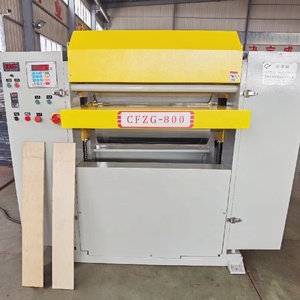










































































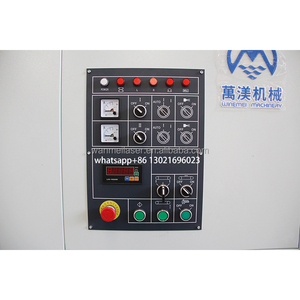









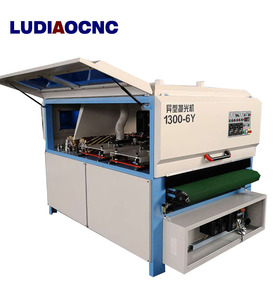
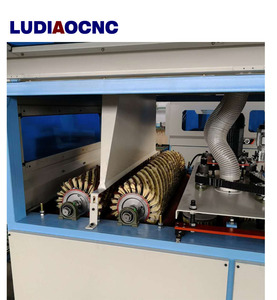
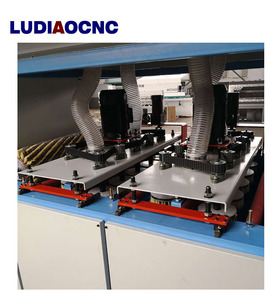


































































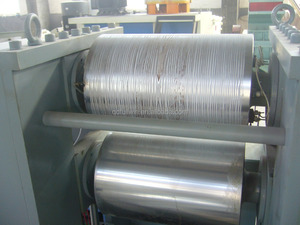




























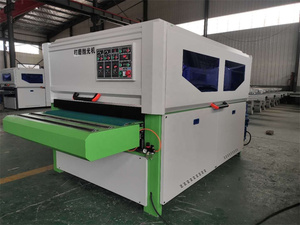
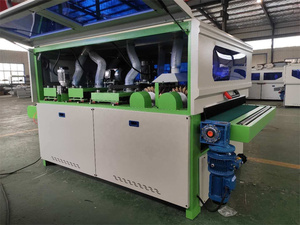






































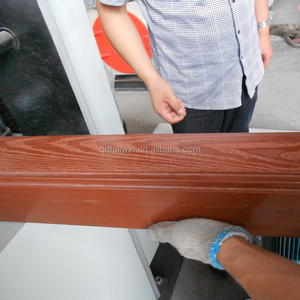











A WPC board sanding machine comes in many types to meet the diverse needs of the WPC decking market. The most popular is the roller-type sander.
Roller WPC Board Sander Machines
Generally, the roller-type is the mat standard in many woodworking shops. It provides a power-assisted way of sanding wood, or in this case, WPC boards. Power rollers pull the WPC boards into the machine, where sandpaper of varying grades smoothens the surface. The machine releases the finished board from the side. Roller-type sanders can have a single or multiple sanding drums. The more drums, the better the sanding and less the passes needed. Normally, roller sanders have one to two drums, while conveyor sanders can have four to six drums.
Conveyor WPC Board Sanders
A conveyor WPC board sanding machine feeds the boards into the roller via a conveyor belt. It helps in auto-feeding the boards into the machine without manual assistance. Therefore, it boosts the efficiency and output of the sanding process. So, a sander that uses a belt to feed the workpiece is more automatic than a roller pulling it in. Sometimes the belt may be replaced with a table lift for smaller pieces. The lifting bed height is adjustable to cater to different material thicknesses. The conveyor width usually measured in inches is the maximum workpiece width the machine can handle. Belt speeds are commonly specified in feet per minute.
Belt Sanding Machines
A WPC belt sanding machine smooths surfaces quickly and efficiently. It is the go-to tool for finishing large areas and edges but may not work as well on irregular shapes. Unlike the roller and drum models that primarily use circular sanding motions, the sanding belts use linear motion. This allows the machine to apply more pressure to the surface area to create a smoother finish. Most WPC belt sanding machines use a 4 HP motor. The sanding belt moves at a speed of around 4,500 RPMs. The machine comes in different belt sizes ranging from 20" to 52".
Thickness Sander Machine
A WPC thickness sander machine adjusts the thickness of the material with precision. It does this by sanding the WPC board to a set thickness. These machines are crucial when uniform thickness is required in woodworking projects. Unlike other sanders that may have irregularities in thickness across the surface of the workpiece, a thickness sander guarantees consistency. This machine mainly uses the conveyor method to feed the WPC material into the sanding drum. Some may have an adjustable bed to vary the thickness of the workpiece being theched.
Other types of WPC sanding machines worth noting include the Spindle, fixed-head, edge, and contour sanders. They all provide a point, linear, and random orbit sanding capability. The spindle sander is fixed vertically and uses a motor that usually runs at ¾ HP. It can work on WPC pieces of any size. An edge sander can be either horizontal or vertical and is mainly used to smooth edges and square corners on WPC pieces. A contour sander can get into curved and irregular shapes other types of sanders can't access.
Furniture manufacturing:
Sanding WPC planks is one of the most crucial steps prior to assembling the various components of WPC furniture. Every furniture piece, including chairs, tables, cabinets, and others, must have a presentable, smooth, and refined surface. A WPC board sanding machine can easily help with this.
Flooring installation:
WPCs are increasingly popular in the flooring industry due to their water resistance and other properties. However, even the best-planned flooring must be refined to look great. A WPC board sanding machine can help with this, making the planks more suitable for elegant flooring.
Decking and outdoor products:
Like indoor flooring, outdoor decking must be pleasant to walk on. Furthermore, sanding makes the surfaces of outdoor furniture products, such as chairs, benches, and tables, less likely to cause injuries. Abrasives are used in a WPC board sanding machine to make outdoor products more aesthetically pleasing and smoother.
Surface preparation for coating or bonding:
Sanding can help to enhance adhesion by roughening the surface of WPC boards, resulting in better bonds with glues, seals, or coatings. This is especially crucial if the subsequent step involves applying paint or another kind of coating.
Prototype development and low-volume production:
Laser WPC sanding machines are not only useful for large-scale production but also for developing prototypes. If business buyers need to create a new design, these machines can help them refine a prototype. It will also help when business buyers do not need to produce large quantities of a specific design but want to ensure that each component is as close to perfect as possible.
Some of the things that business buyers need to consider when choosing the right WPC sanding machine for themselves are the following.
Production capacity
Think about the amount of WPC boards that need to be sanded in a given period. This is usually influenced by present demand and future growth potential. To meet current demand, showing the capability to meet present demand is essential. Consider what capacity will be needed in the future to meet possible demand. Get a machine with a capacity that will meet present demand and future capacity without having to invest more in machines later on.
Flexibility and adaptability
It is important to get a sanding machine that is able to process various sizes and shapes of WPC boards, as well as different types of sanding requirements. The ability to make quick and easy changes to the machine is also important. Look for features like electronic controls, changeable sanding belts, and adjustable feeding speeds to ensure flexibility and adaptability.
Automation and efficiency
Consider how much efficiency and productivity are important to cost-effectiveness and profit margins. Look for machines that have automated features like self-adjusting systems, feeding mechanisms, dust extraction, and safety guards. These will help to prevent accidents and ensure the operator's safety. Investing in a machine that has many security features is important for the safety of all employees.
Operating and Maintenance Costs
Think about how much it will cost to run and look after the sander machine in the long run. Choose a machine with energy-saving features that will reduce energy costs over time. Consider the machine's long-term reliability and the availability of spare parts and support services from the manufacturer. Choose a machine that is easy to look after and has low maintenance requirements to reduce maintenance costs.
Q1: Which type of surface finish is achievable with a WPC sander machine?
A1: Most portable WPC board sanders will give an adequate smooth surface for painting and sealing, but industrial machines will be able to achieve a mirror polish on the surface that is not only aesthetically pleasing but will also extend the life of any coating applied.
Q2: How are WPC board sanding machines powered?
A2: Most sanding machines are powered by electricity, but in some cases, a pneumatic machine might be considered if it were more suited to the application or available power supply.
Q3: Can all types of WPC boards be sanded with a standard WPC board sanding machine?
A3: Generally, all types of WPC boards can be sanded, but when considering the machine to be used, it is essential to pay attention to the difference in density of the different boards. The capacity of the machine should be considered according to the material it will be used to sand.
Q4: Are there any safety features on a WPC board sanding machine?
A4: Many safety features are crucial when selecting a sanding machine These may include covered or guarded sanding drums, a dust collection system, and emergency stop buttons.